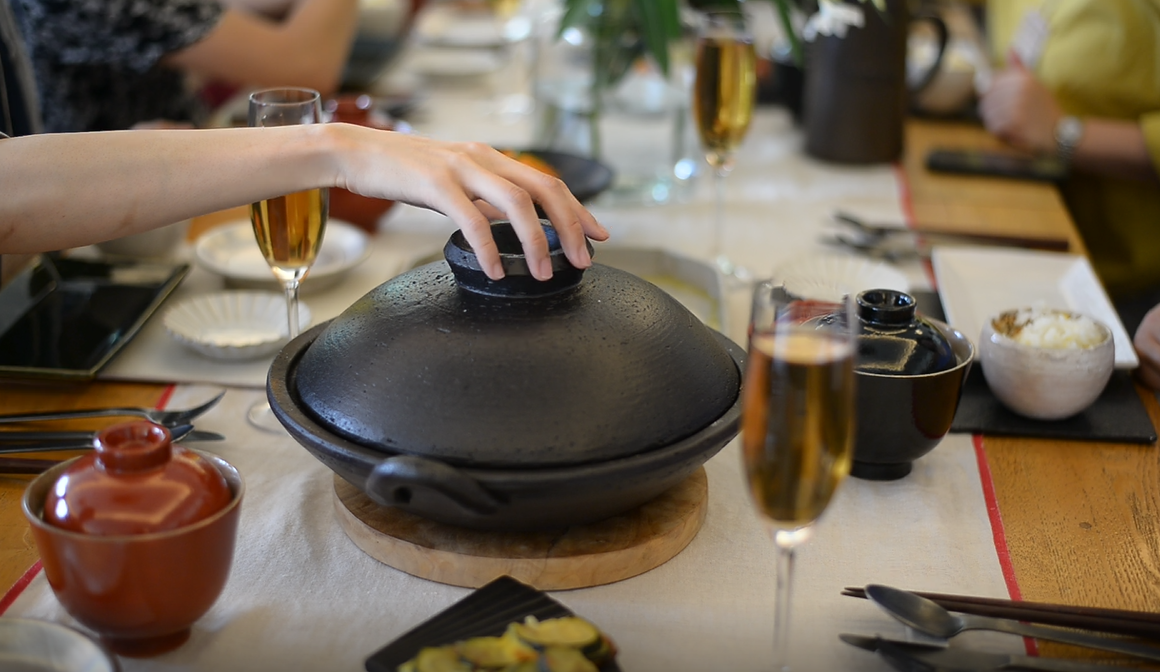当日発送について
平日(営業日)の12時までにご注文が完了したご注文で、以下の条件に該当するご注文を当日配送いたします。
◯ご注文いただいた商品の在庫がすべてある場合。
◯お支払方法がクレジットカード決済か代引きの場合。
◯定休日はではない。
※受注状況や確認事項の有無などにより、お時間をいただく場合がございます。
定休日のご案内
土日祝日、お盆、年末年始などは出荷業務をお休みいたします。
Now Loading...
平日(営業日)の12時までにご注文が完了したご注文で、以下の条件に該当するご注文を当日配送いたします。
◯ご注文いただいた商品の在庫がすべてある場合。
◯お支払方法がクレジットカード決済か代引きの場合。
◯定休日はではない。
※受注状況や確認事項の有無などにより、お時間をいただく場合がございます。
土日祝日、お盆、年末年始などは出荷業務をお休みいたします。
9月に入っても30℃を越える夏日が続いていて、
そんな天候とは裏腹に、気持ちはすっかり秋になってきました。
今日は秋から活躍する土鍋のテガメをご紹介します。


マルミツの数ある土鍋の中でも、それはそれは独特な存在感を放ち、
テーブルにどんと1つ並ぶだけで、鍋料理を格段にランクアップしてくれるフォルム。
空間演出力においてナンバーワンなんじゃないかと、個人的に思っています。

横からみると、受けの部分よりも蓋の方が大きくデザインされているのがわかります。
一見アンバランス?!と思われるかもしれないですが、
この形だからこそ美味しくできる料理がたくさんあります。
蓋が山型になっていて空間が広くあるので、
キャベツ・もやし・ニラなど具材をてんこ盛りに入れる、もつ鍋なんかにぴったり。
広い空間の中でじっくりと蒸すことで、野菜の甘みも存分に引き出してくれます。

それと、内側の面が広いので鉄板のように使用することもできるのが、新たに気付いた魅力。

以前、社員食堂で行った豚肉のエチュベでは、
ブロック肉をソテーして、野菜も加えて蒸し焼きにする調理に使用してみました。
(作り方の動画もありますので、ぜひ見てみてください!)

他の土鍋でも試してみましたが、なによりもテガメの使いやすさを実感しました。
いつも煮込み料理だけに使用している方には、
この土鍋で蒸し焼きにする調理法をぜひ試してほしいほどおすすめです。

またアルバートの蒸し皿と10号鍋はサイズが合うので温野菜にもぴったり。
蒸し皿の高さと鍋の深さがちょうどよく、食卓に座ったままでも鍋の中の食材が取りやすいのも嬉しいポイント。
このテガメで、いろいろな調理法を楽しんでみてはいかがでしょう?